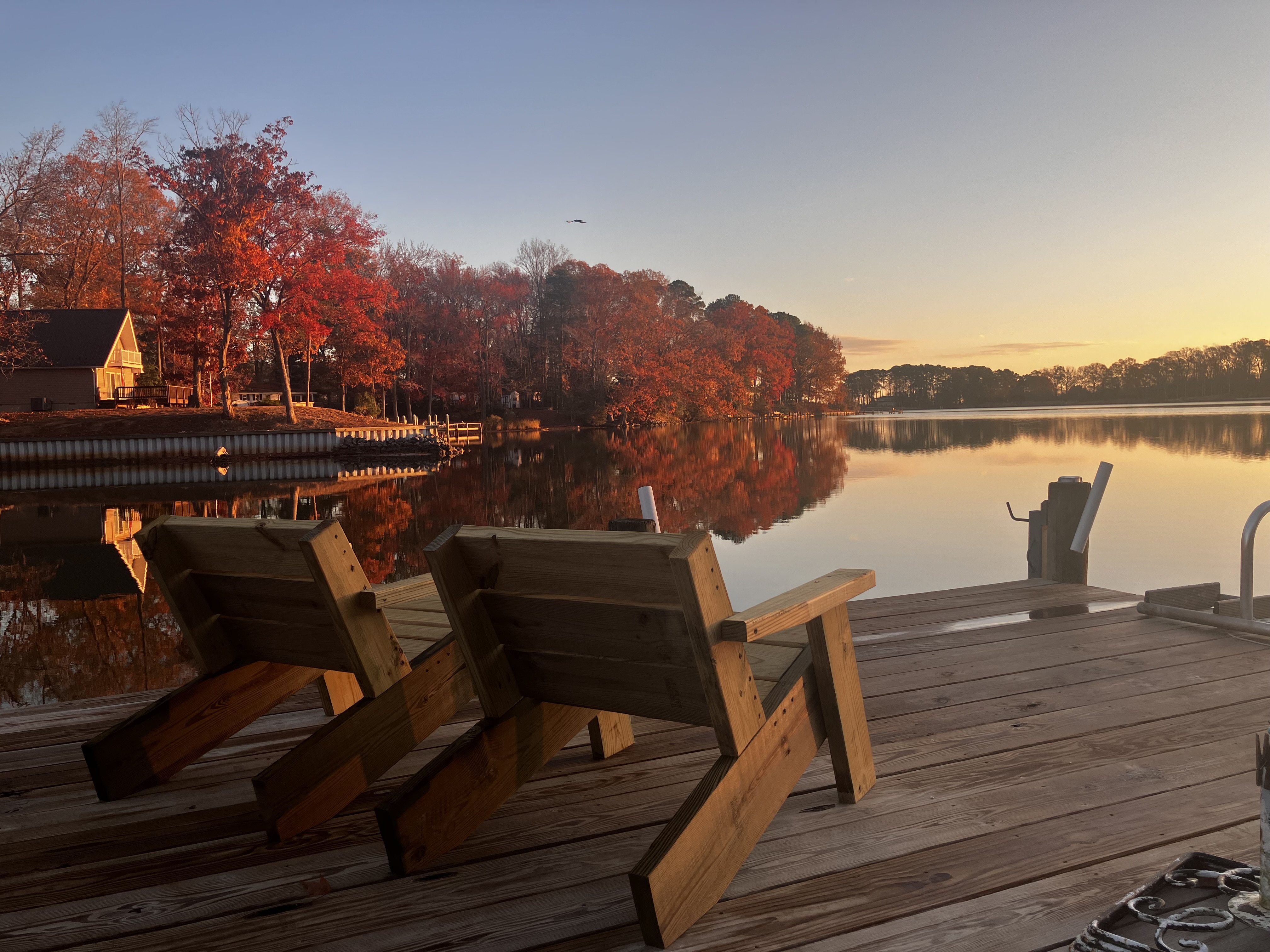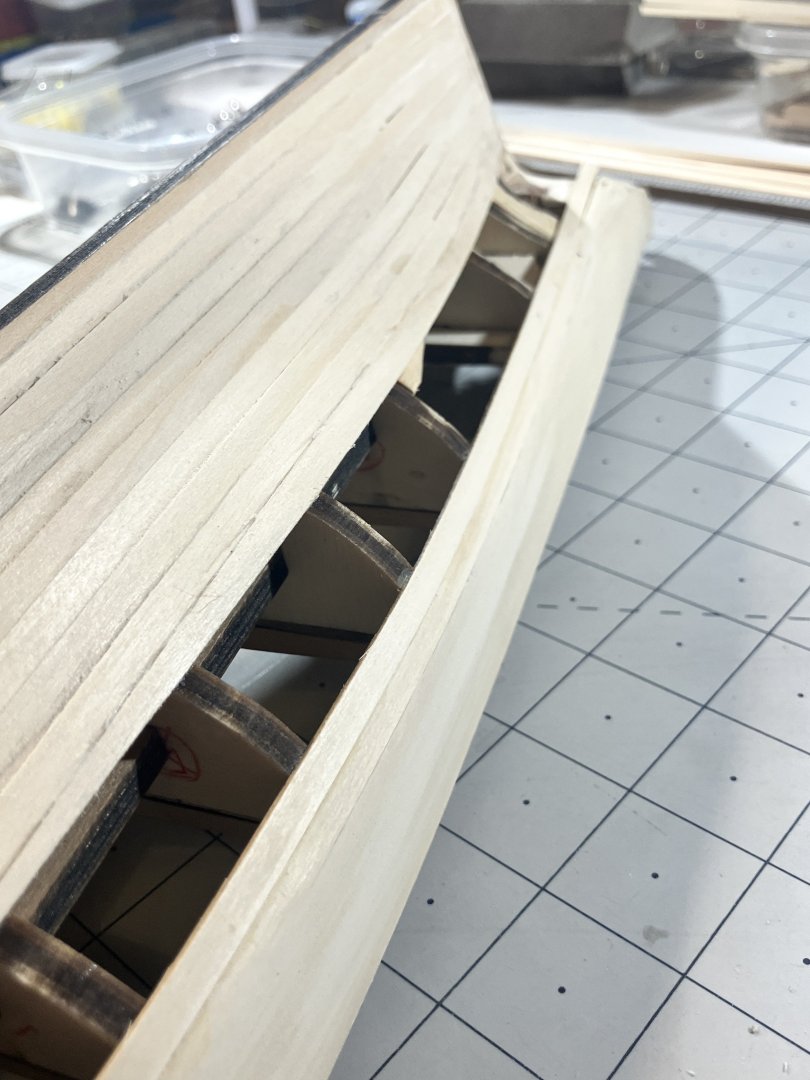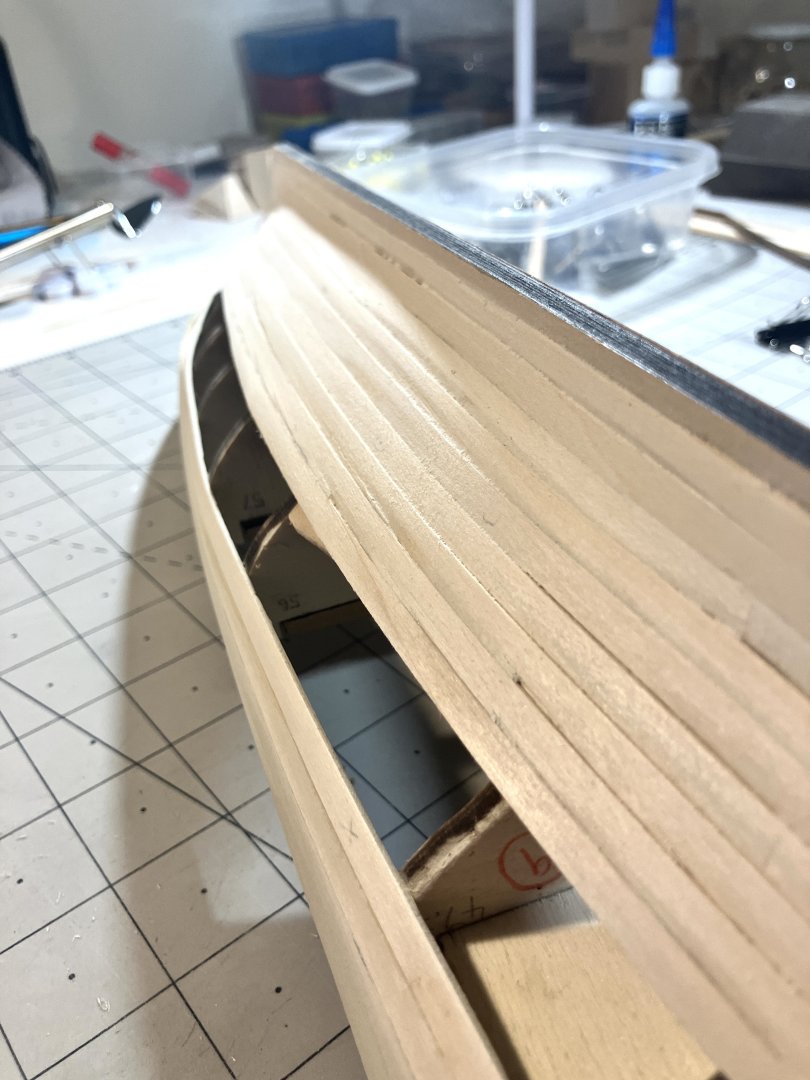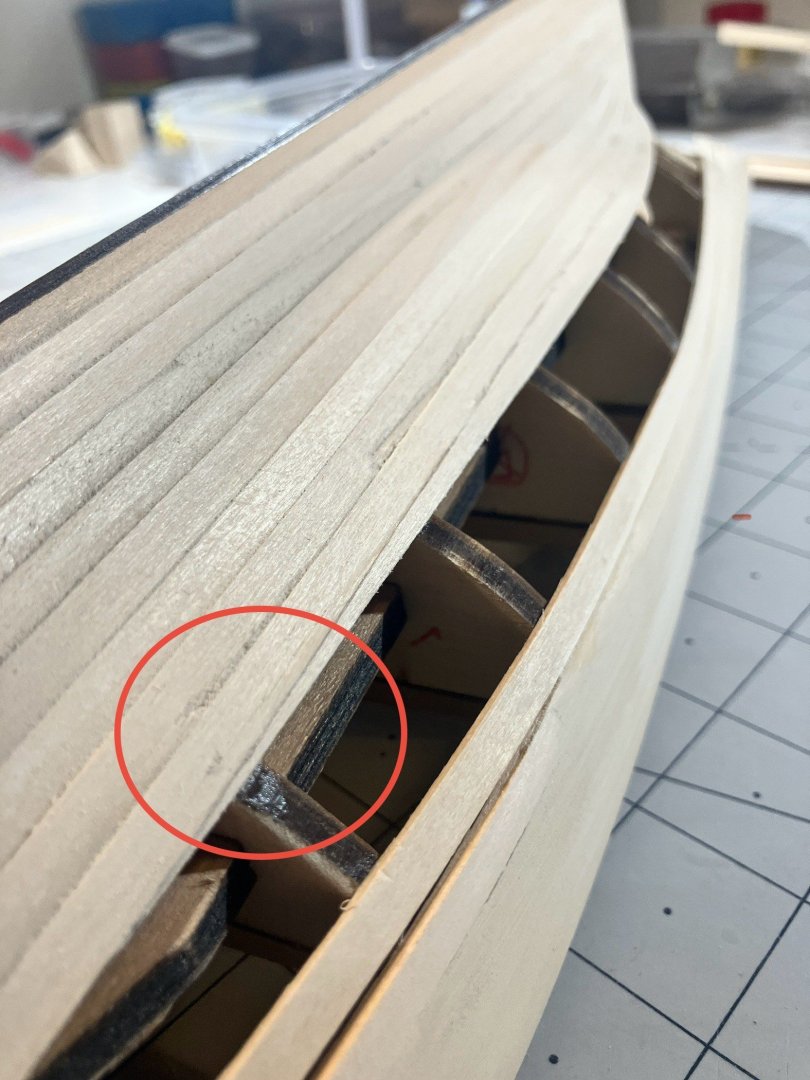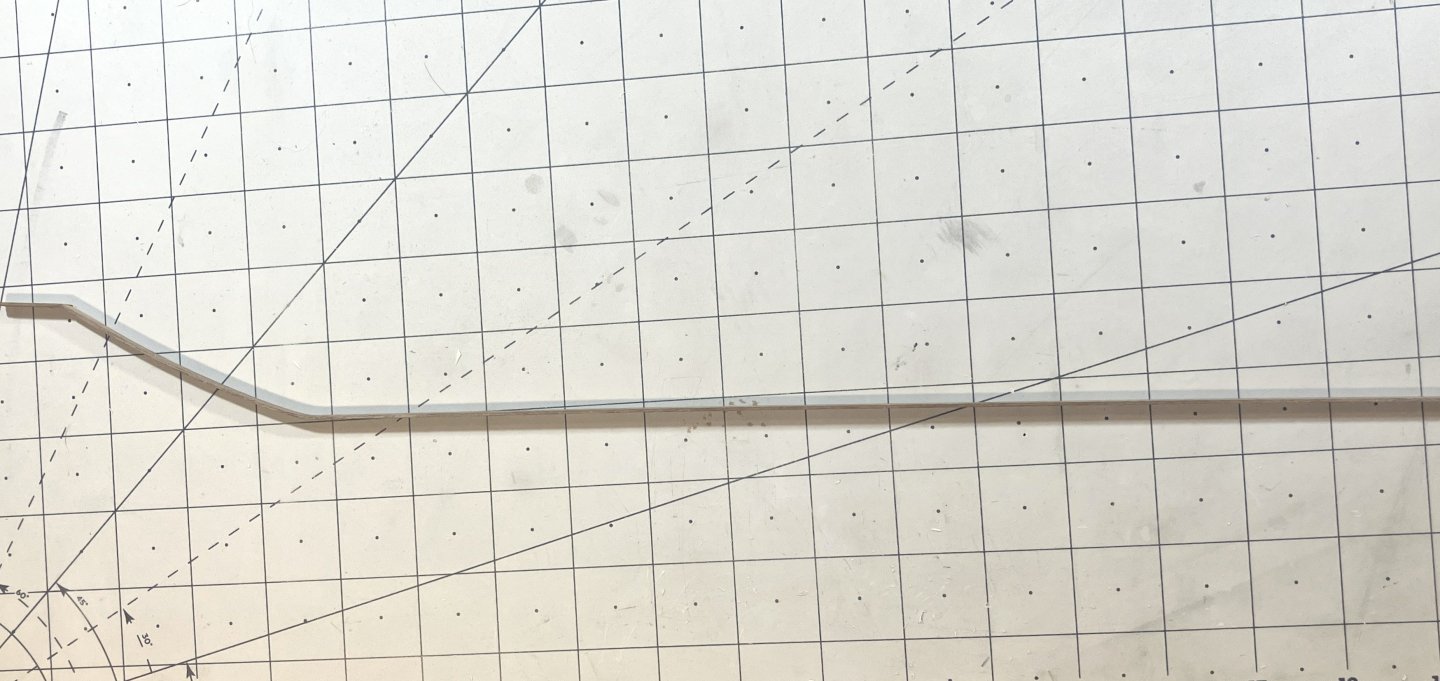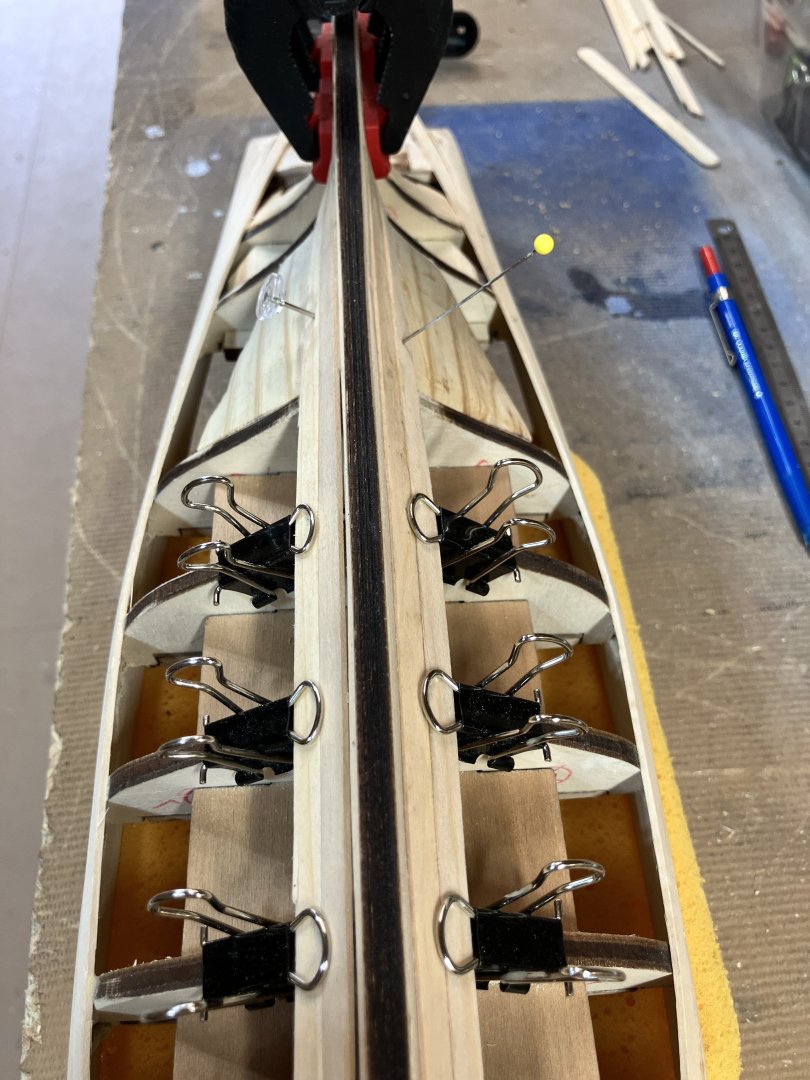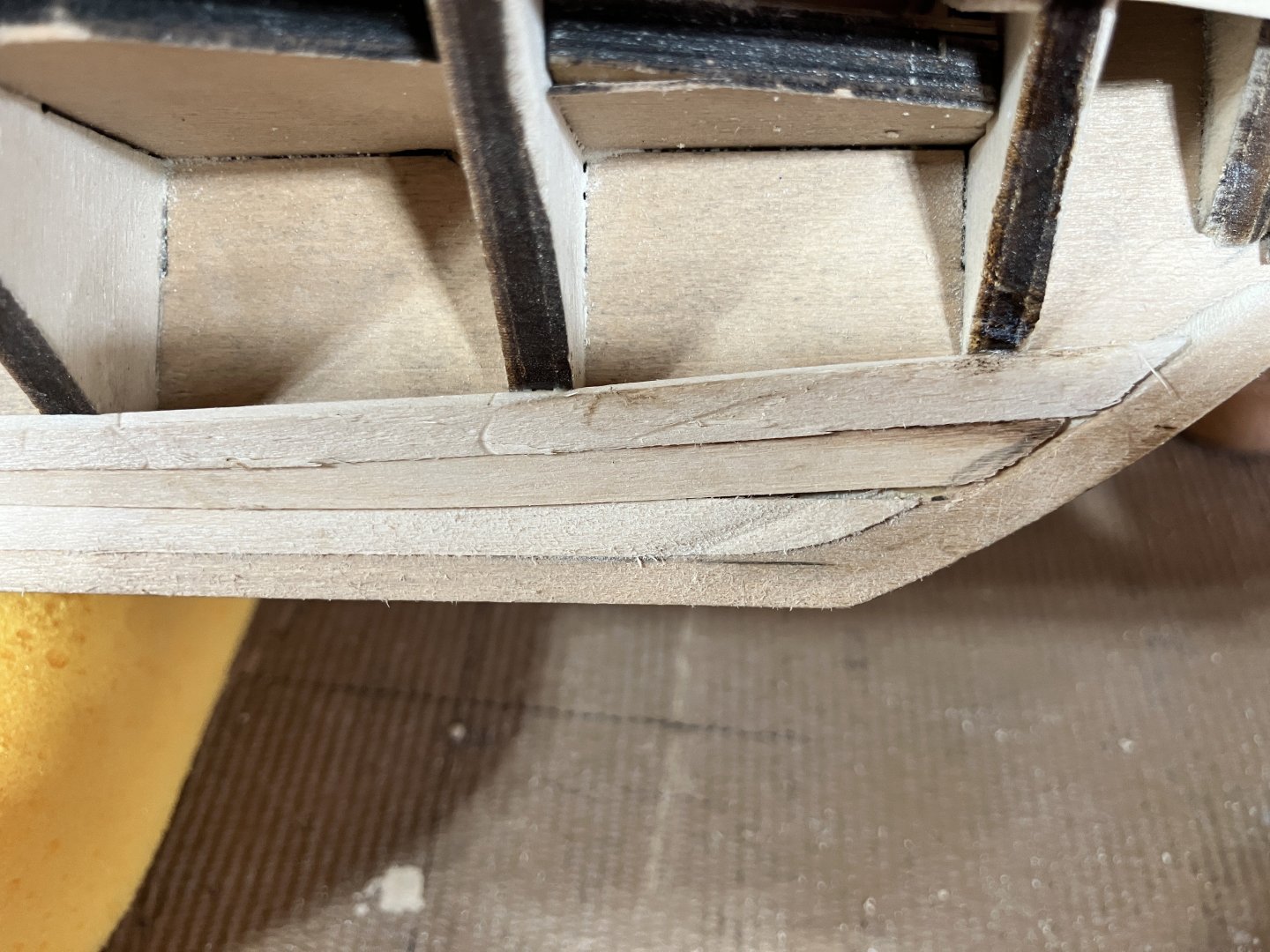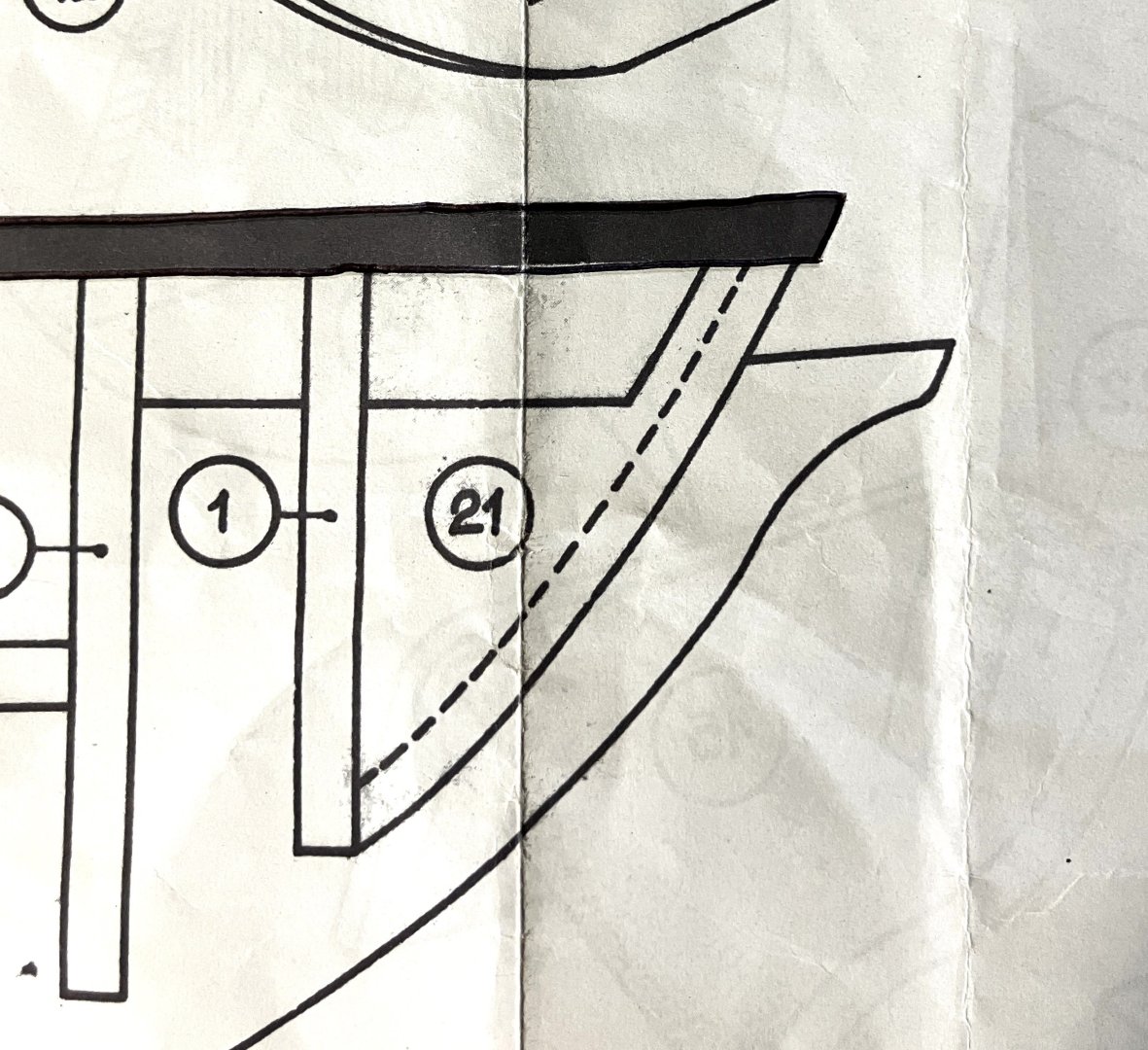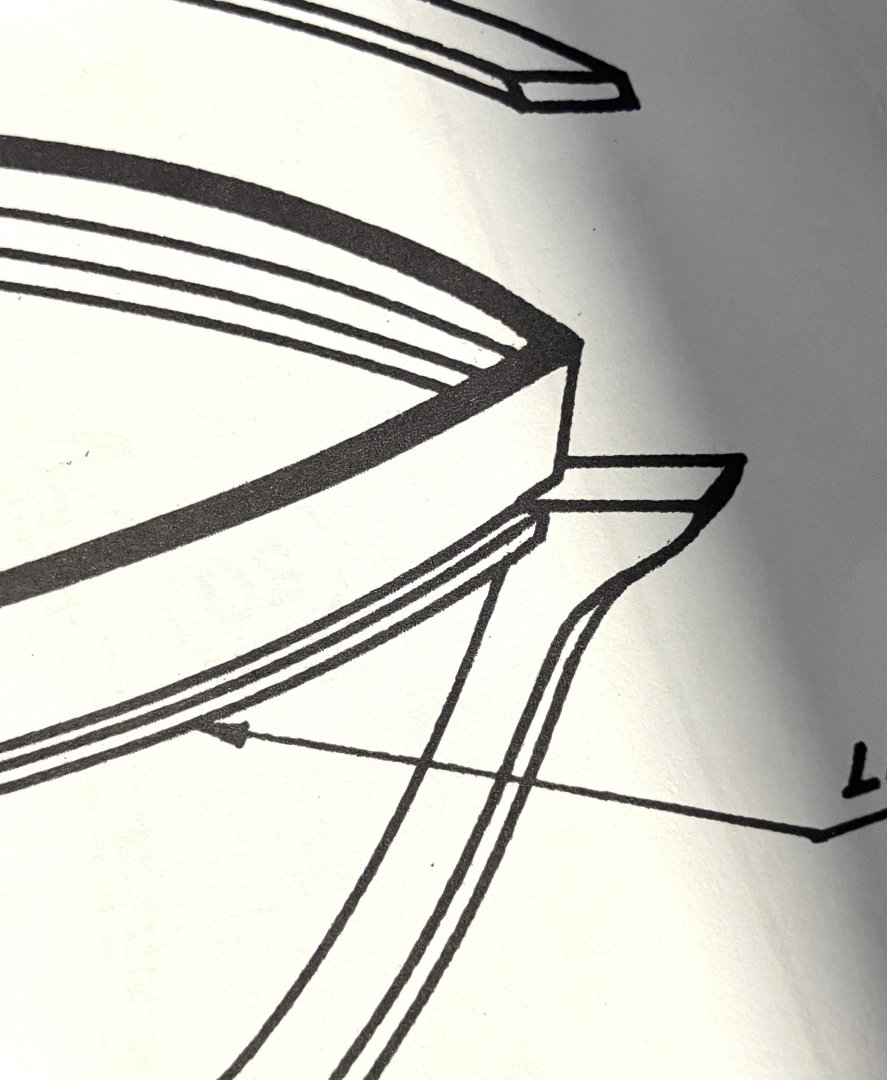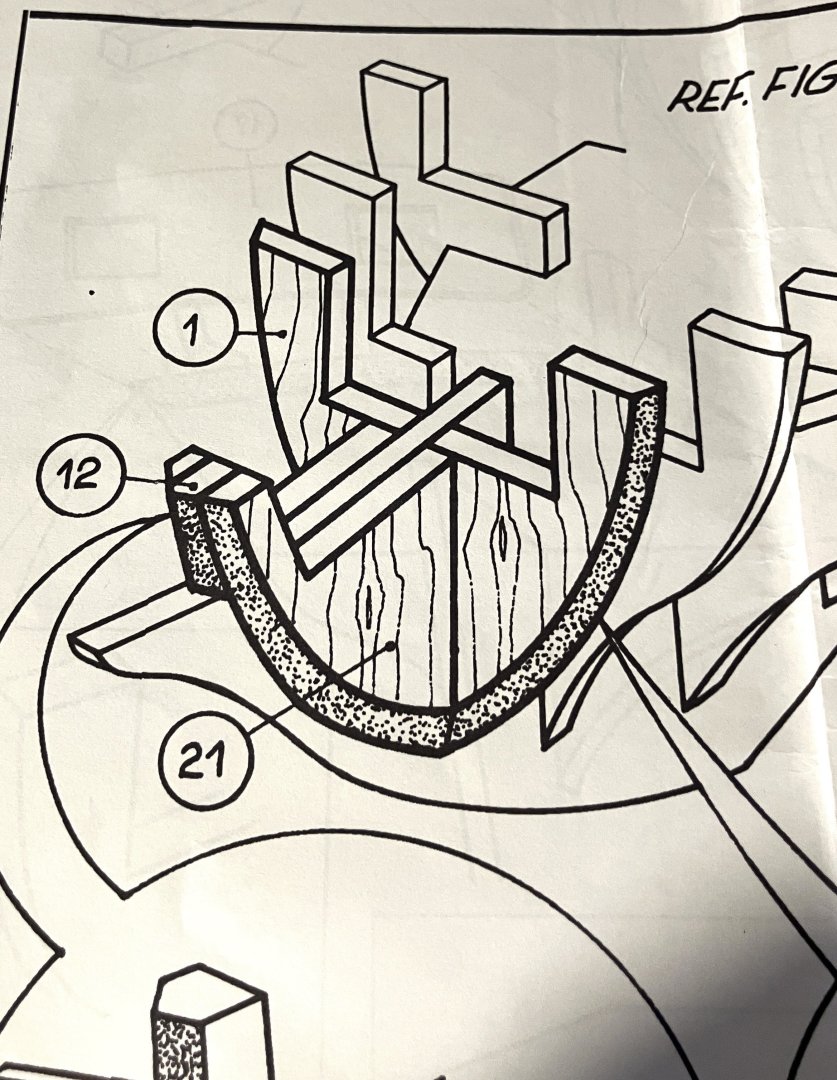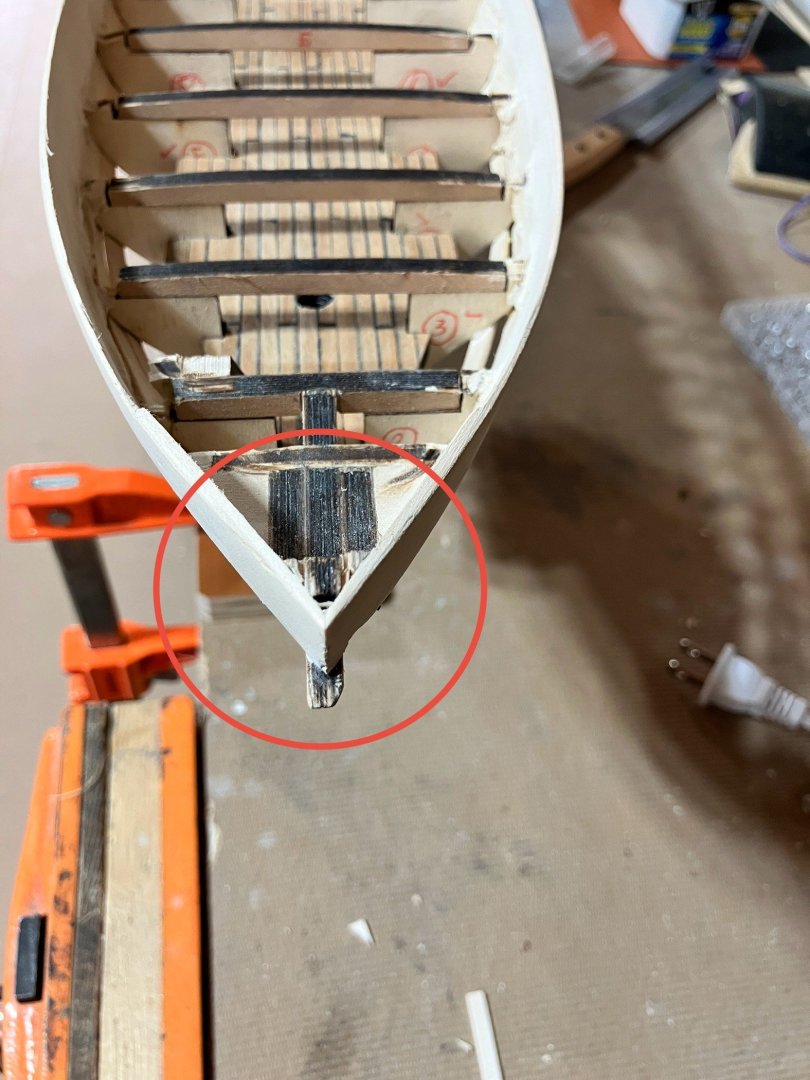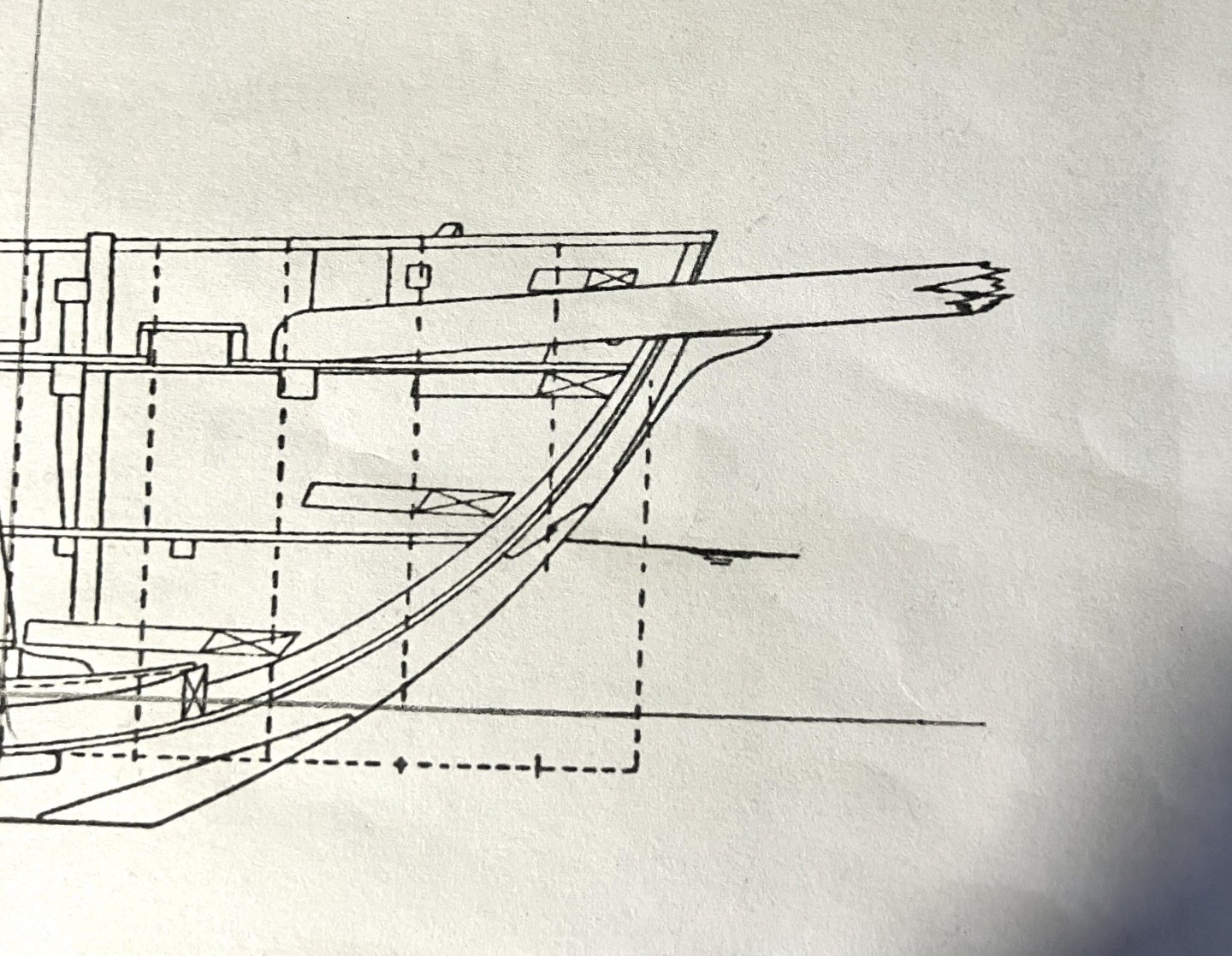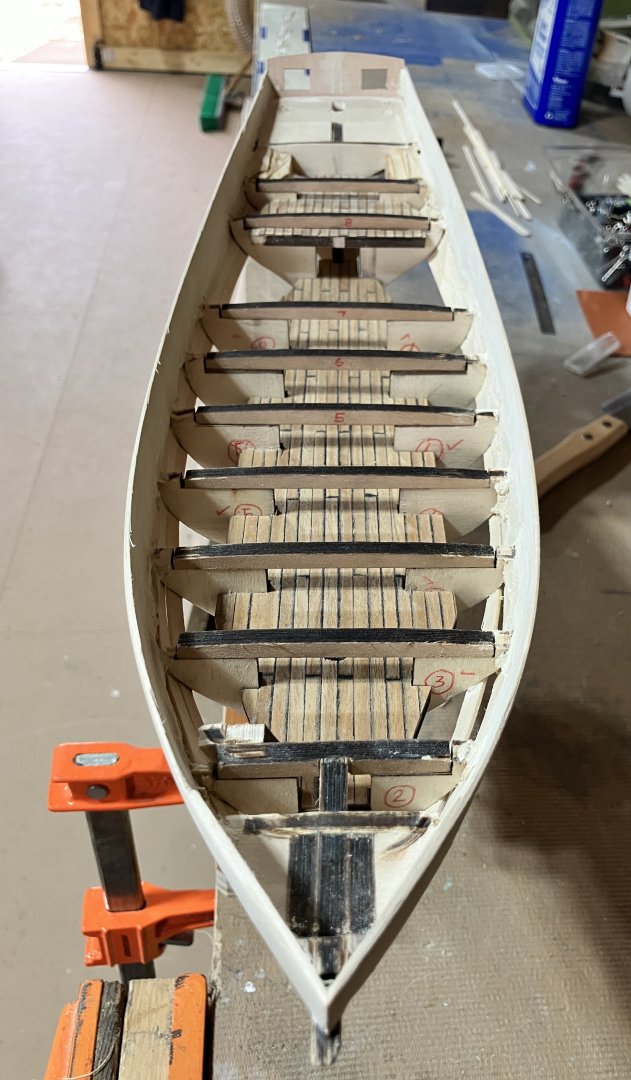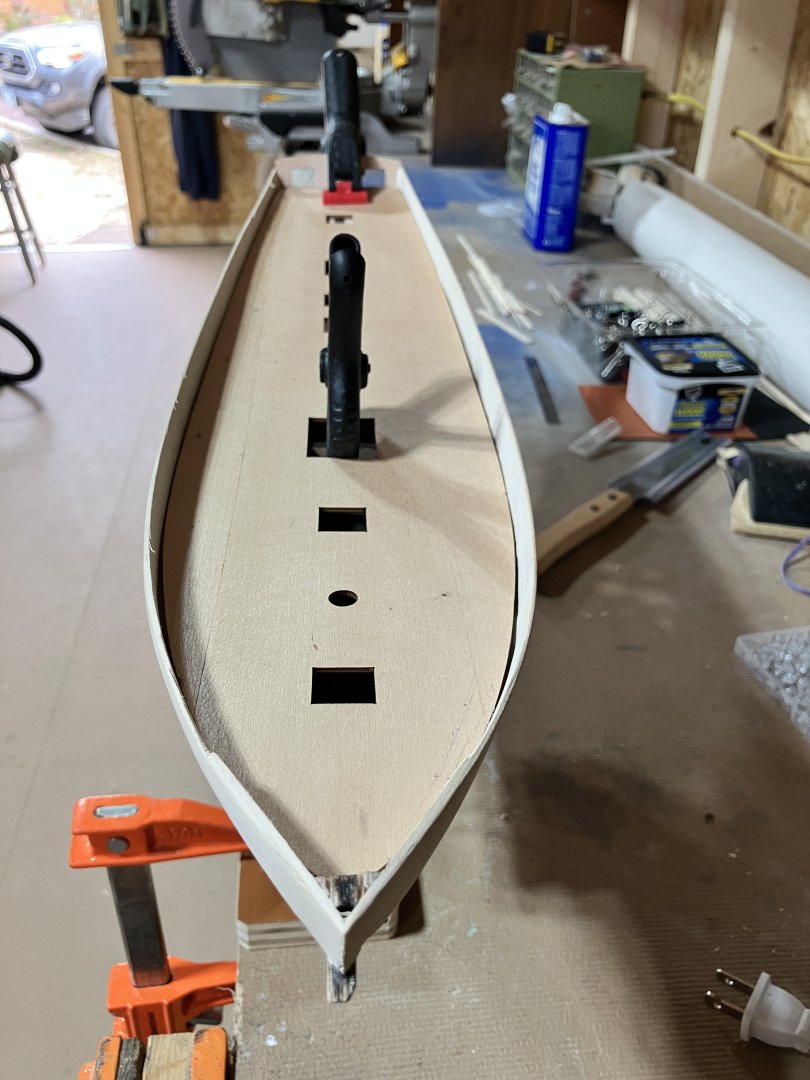-
Posts
853 -
Joined
-
Last visited
Content Type
Profiles
Forums
Gallery
Events
Everything posted by SaltyScot
-
My fellow modelers, the CEO has declared that my presence is needed elsewhere for the next week (at least). Her mother's house is under contract with the closing date set for April 28th. She plans to move out on the 23rd. The plan is to spend a good part of next week up there in DC to get the final bits and pieces out of the house that are either being sold or donated, before the moving company gets there. There always appears to be something else to be done up there and both myself and the CEO are counting down the days until the 23rd rolls around. Because of all this, I will be away for an as yet undefined period of time, that matter is not under my control....... I go where I am requested because, as we all know, happy wife, and so on......
- 257 replies
-
I know exactly what you mean, Glenn. On my Endeavour build I had fully finished the hull, painted and varnished it and was very happy with the result. While I was drilling the holes for the stanchions at the stern of the boat I slipped with the tiny drill bit and went through too far. When I saw the drill bit sticking out through the underside of my nice shiny hull (and the hole that got made when a piece of wood got punched out by the drill bit), I nearly lost it. I had to just take a very deep breath and tackle the issue otherwise I would have thrown the drill against the wall, or something worse.......... Like you mentioned, getting on with something enjoyable and uplifting is the way to go. Your build looks good mate.
- 241 replies
-
- Vanguarrd Models
- Harpy
-
(and 1 more)
Tagged with:
-
Been there, Trevor. My shipyard is in a spare bedroom here in our home. When I get the vacuum out and get in here, I hear all the bits of nails (and the odd tiny cleat) scuttling on up the vacuum hose.
- 167 replies
-
- Norwegian Sailing Pram
- Model Shipways
-
(and 1 more)
Tagged with:
-
I agree with all of the above, nicely done, Phil!
- 288 replies
-
- Card
- Pre-Dreadnought
-
(and 3 more)
Tagged with:
-
There is definitely an unpredictability to our weather here right now. Yesterday and today we had 81F, fantastic weather to be outside doing stuff. Tonight we are expecting thunderstorms and highs tomorrow of 57F. Grab the sun while you can I guess I hope it shines up there, Trevor, so that you can get out and get your spraying done.
- 167 replies
-
- Norwegian Sailing Pram
- Model Shipways
-
(and 1 more)
Tagged with:
-

Received partially-built Corel Victory -- worth salvaging?
SaltyScot replied to SaltyScot's topic in Wood ship model kits
It is not in the trash yet I have a lot of other projects going on at this time, both inside and outside the shipyard. This may be one for a long, cold winter's day. -
The planking is coming along nicely, I have made good progress on the one side. I was perhaps a little ambitious when I said I would finish this in one afternoon , I am taking my time and enjoying every minute of it: I added a stealer strake to get me back on line while I was working up the hull. I should have done that on the one above it (towards the sheer strakes, the hull is upside down right now), because there is a gap. That strake will be coming off again: I also steam bent a nice piece of walnut that I will be using as a false keel and up to the beakhead (you made me think of this @Kenchington when you described just what a false keel is). It will cover the nasty plywood that currently runs along the keel and keeps separating:
- 257 replies
-
But you came up with a decent solution, Glenn. Nice save
- 241 replies
-
- Vanguarrd Models
- Harpy
-
(and 1 more)
Tagged with:
-
Well put, Phil. I have decided to run with it. this is a lesson learned and one that I am sure to be aware of in future builds. I am a little frustrated with myself for not getting that fairing right but am not going to lose any sleep over it.
- 257 replies
-
Hmmm, that is slightly annoying if that is the case. My issue with that is, if I had faired those parts you mentioned any more than I already had, the strake from the forward bulkhead would have had a weird angle coming off that bulkhead and onto those pieces. Perhaps the whole forward section of the hull should have been faired a little more...... Well, the matter is moot now, unless I rip off all the planks and start over. That being said, while I was fighting with that splitting plywood yesterday, I very seriously considered actually starting again and making the bulkheads and keel (or whatever it's called) out of a decent piece of wood, so basically scratch building them using the plans. Food for thought.
- 257 replies
-
I enjoyed my time in the wood shop/shipyard today. I still have to tackle the beakhead issue (unless it is something I am over reacting about) but more about that in a bit. I fitted the garboard strakes this afternoon using @Dr PR's method explained here (thank you, Phil). Using the small flat iron plank bender certainly helped things along very nicely: Now, onto my issue with the beakhead. The plans clearly show the beakhead protruding nicely out a ways from the point of the bow: The problem I am having is that the way the false keel was made, the point of the bow sits way too far forward for there to be any significant gap from that point to the tip of the beakhead. Here is an image showing the initial hull fairing. Note the distance from the tip of the false keel (there may be a correct term for it but I am not aware of it), and the tip of the beakhead: Once the planking is on and following those faired pieces at the bow, there is no way to achieve the gap shown in later images in the plans. Here is what it looks like on my build at this time: And here the plans from Chapelle's book: So, tell me, am I making a big fuss about nothing or do I have to extend the beakhead somewhat? I would hate for the bowsprit to not have enough to sit on. All that being said, I like the way the hull is shaping up, she certainly has nice lines: I also removed all the tabs from the bulkheads and did a dry fit of the sub deck just to see how I was doing. It went quite well: Tomorrow I hope to finish the first planking and get her sanded down. I did apply some filler here and there on the sheer strakes to strengthen them up a little after I removed the bulkhead tabs. I will trim all that up once she is fully planked.
- 257 replies
-
You enjoy that, sir. It is a beautiful part of the world. I spent some years in my youth in the south of Wales and fell in love with the place. Anyone reading who was not familiar with that border region and the nomenclature would think you were going to watch a marching band
- 332 replies
-
- Harpy
- Vanguard Models
-
(and 1 more)
Tagged with:
-
Oh, yes, I am familiar with these. I wasn't aware they were called Turk's heads. Are you going to weave it onto the tiny tiller yourself or carve it out of wood?
- 167 replies
-
- Norwegian Sailing Pram
- Model Shipways
-
(and 1 more)
Tagged with:
-
Trevor, I am finding that replacing some of the kit provided material (in my case it is very unstable plywood) is saving me a lot of frustration. O look forward to seeing your rudder solution, sir and the wood you finally choose to make it from. The tiller on my build will be getting a make over too, obviously nothing as complex as your setup but it will enhance the final appearance in my opinion. What is a turk's head grip?
- 167 replies
-
- Norwegian Sailing Pram
- Model Shipways
-
(and 1 more)
Tagged with:
-
That is true, Jo, but in instances like that, the harder one tries to get it right, the more seems to go wrong. Stepping away and taking the mind off it is a good alternative (that way the model doesn't end up flying across the room or ending up in the trash 🤣🤣🤣)
- 257 replies
-
Yes, Phil, sunshine and that nice breeze coming off the water were very relaxing. Food for the soul let me tell you.
- 257 replies
-
Today was not a particularly productive day in the shipyard, for several reasons. It started off as one of those days where everything I tried to do went wrong. I put up with that for about an hour and then deiced to step away. My plan had been to modify the bow because the kit seems to have an error, the beakhead appears to be too short. When I compare the run of the bow planking on the model and the images in the plans, there seems to be a big difference between the two in the length of the beakhead that protrudes away from the bow. Because I have the enlarged Mosquidobit images from Chapelle's book here, I could see that I needed to make some adjustments. Things didn't run all that smoothly this morning and, after stepping away and then taking everything outside to my wood shop (it was 72F here today [that's 20C for you European folk]), things didn't improve. I decided to take an adult beverage down to our dock and enjoy the sunshine. After that, funnily enough, my mind appeared clearer and I had a decent game plan. Things did move in the right direction somewhat (I took no pictures sadly), and tomorrow is a new day! I shall report back with some updates and images of my progress then.
- 257 replies
-
Hi, Yorick. Welkom op het forum. Like others have mentioned above, if you have amny questions at all, there are always plenty of people here willing to help you out. Do not be afraid to ask! Bon Voyage!
-
I am sure it will be the finest tiller, sir
- 167 replies
-
- Norwegian Sailing Pram
- Model Shipways
-
(and 1 more)
Tagged with:
About us
Modelshipworld - Advancing Ship Modeling through Research
SSL Secured
Your security is important for us so this Website is SSL-Secured
NRG Mailing Address
Nautical Research Guild
237 South Lincoln Street
Westmont IL, 60559-1917
Model Ship World ® and the MSW logo are Registered Trademarks, and belong to the Nautical Research Guild (United States Patent and Trademark Office: No. 6,929,264 & No. 6,929,274, registered Dec. 20, 2022)
Helpful Links
About the NRG
If you enjoy building ship models that are historically accurate as well as beautiful, then The Nautical Research Guild (NRG) is just right for you.
The Guild is a non-profit educational organization whose mission is to “Advance Ship Modeling Through Research”. We provide support to our members in their efforts to raise the quality of their model ships.
The Nautical Research Guild has published our world-renowned quarterly magazine, The Nautical Research Journal, since 1955. The pages of the Journal are full of articles by accomplished ship modelers who show you how they create those exquisite details on their models, and by maritime historians who show you the correct details to build. The Journal is available in both print and digital editions. Go to the NRG web site (www.thenrg.org) to download a complimentary digital copy of the Journal. The NRG also publishes plan sets, books and compilations of back issues of the Journal and the former Ships in Scale and Model Ship Builder magazines.

